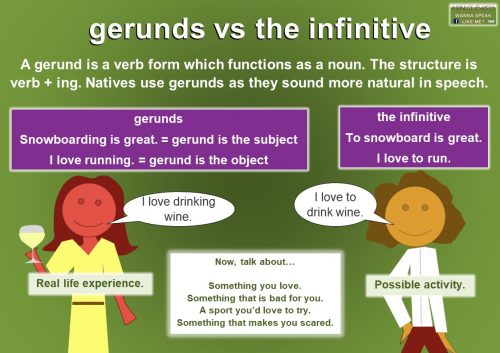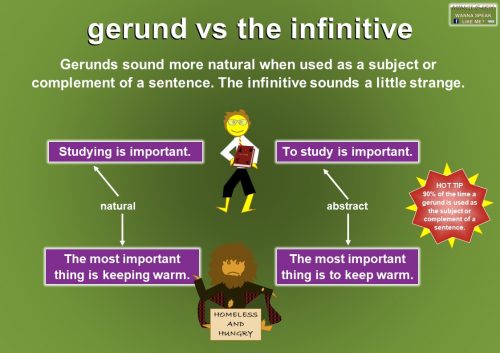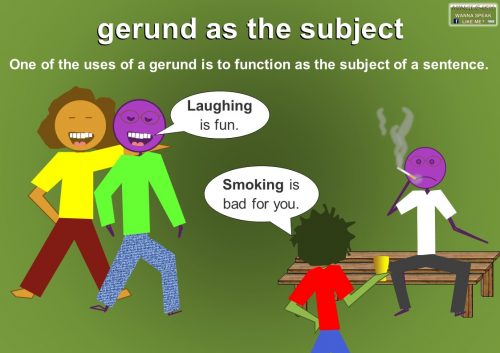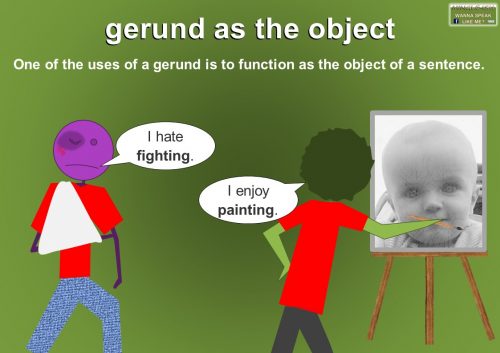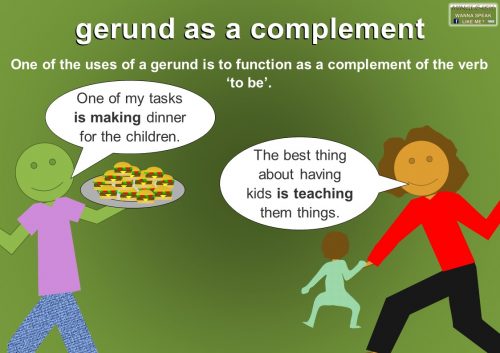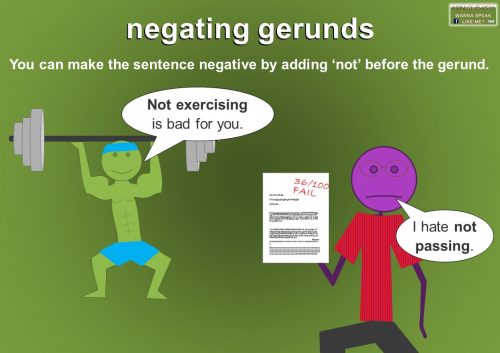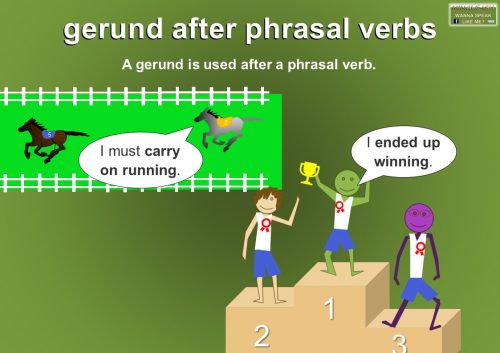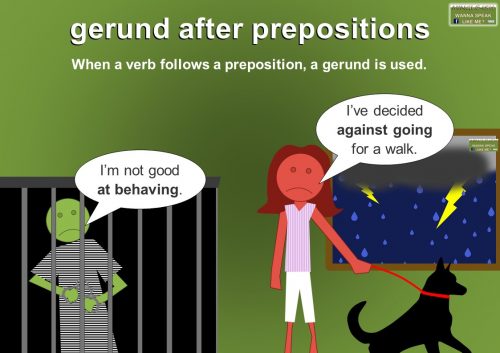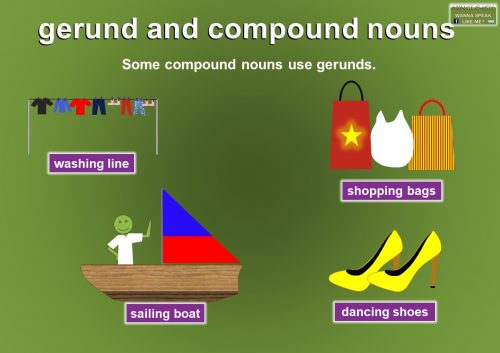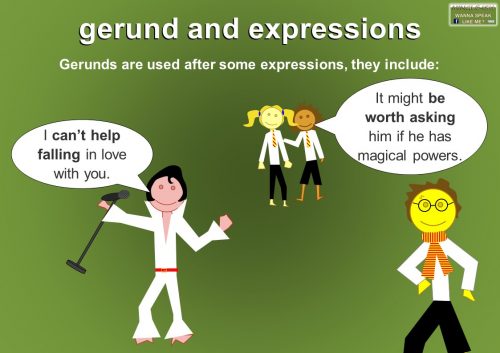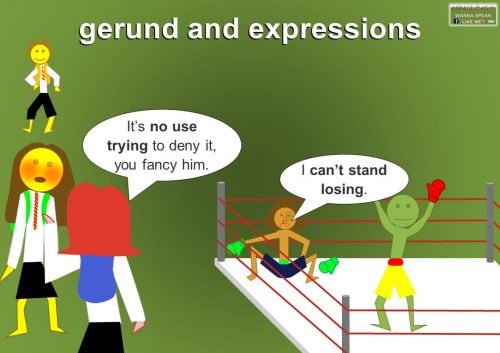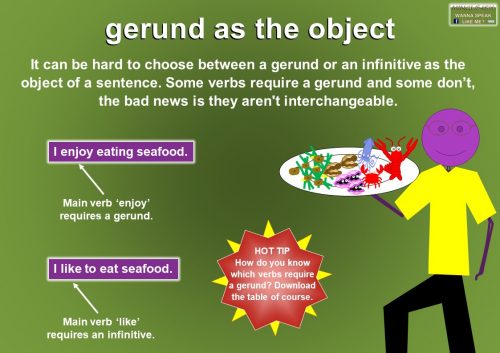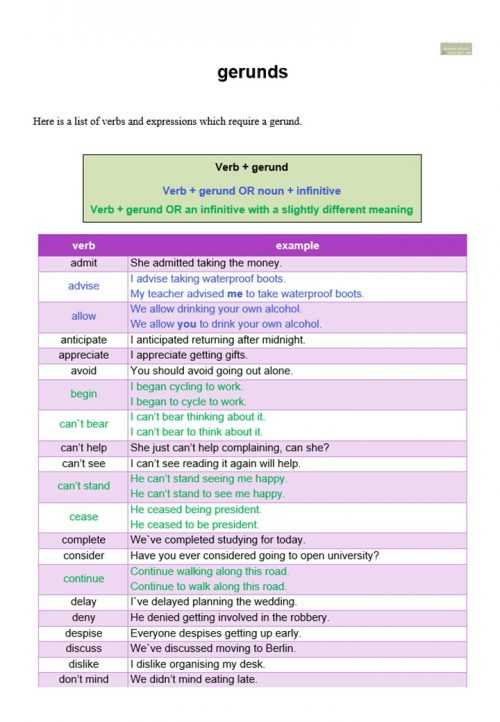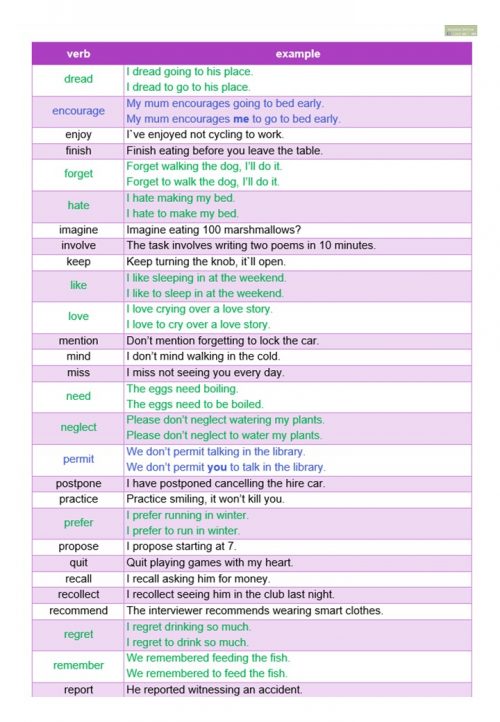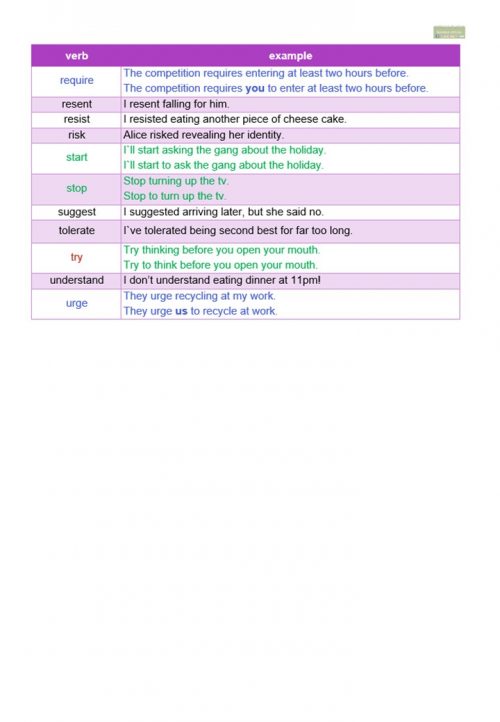A gerund is probably something you have heard or use but are not aware of it. On this page, we’ll have an in depth look at gerunds. There are hints and tips to help you recognise and use them.
Let’s start with a basic overview. Gerunds are made using verbs, but they function as a noun. You can easily spot them as the form is ‘verb + ing’. They look exactly the same as the present participle. and they sound more natural in everyday speech.
Are you still with me? Take a look at the pictures below to help visualise what I’m trying to explain. Read the examples below out loud so you can hear how different a gerund and the infinitive sound.
gerund as the subject, object or complement
A gerund can function as the subject, object or complement of a sentence. Check out some examples below.
negating a gerund
You can easily make a gerund negative by adding ‘not’ just before it.
more functions of a gerund
Here are some more times we can use a gerund.
The infinitive or a gerund?
Are we all agreed that a gerund sounds more natural? The next question is… How do I know when to use the infinitive or a gerund? Read on and i’ll let you in on a few secrets.
verbs + gerund list
Do you like bedtime reading? This table should keep you busy for a while. It tells you which verbs require a gerund and which ones can use an infinitive too.
